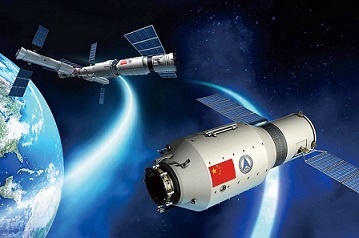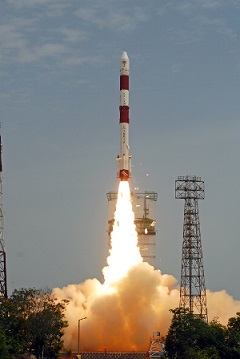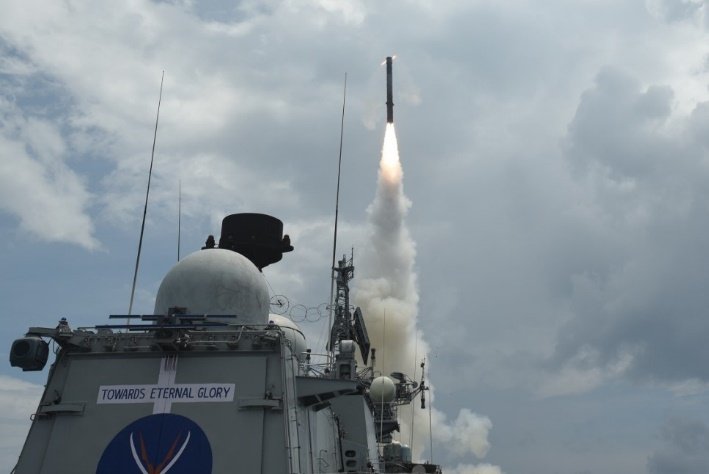
An artist's illustration of China's Tiangong-2 space lab. An internet image
BEIJING (PTI): China's first unmanned cargo spacecraft has successfully completed automated docking with the orbiting Tiangong-2 space lab, state media reported.
The Tianzhou-1 cargo spacecraft successfully completed automated docking with the orbiting space lab at 12:23 PM (local time) on April 22, according to Beijing Aerospace Control Centre.
Tianzhou-1 was successfully launched on April 20 from the Wenchang Space Launch Centre in the southern Hainan province and made contact with the space lab within hours.
The tube-like craft measures 10.6 metres in length and can carry over six tonnes of cargo as well as satellites.
In space, the cargo ship will dock with the orbiting Tiangong-2 space station, provide fuel and other supplies, and conduct space experiments before falling back to Earth.
The Tianzhou-1 cargo ship and Tiangong-2 space lab will have another two dockings, Xinhua reported.
The second docking will be conducted from a different direction, which aims to test the ability of the cargo ship to dock with a future space station from different directions.
In the third docking, Tianzhou-1 will use fast-docking technology. It normally takes about two days to dock, while fast docking will take only six hours.
Refuelling will also be conducted, a process with 29 steps that takes several days.
Tiangong-2, which went into space in September last year, is China's first space lab "in the strict sense" and a key step in building a permanent space station.
Cargo ships play a crucial role maintaining a space station and carrying supplies and fuel into orbit.
China aims to build a permanent space station by 2022, that is expected to orbit for at least 10 years, and the debut of the cargo ship is important as it acts as a courier to help maintain the space station.
Without a cargo transportation system, the station would run out of power and basic necessities, causing it to return to Earth before the designated time.
The space centre on Tuesday conducted the final rehearsal for the launch, which covered all systems involved in the launch, such as the rocket, spacecraft, launching site and testing, control and communication systems.
China's fast-expanding space programme targets a landing on the dark side of the moon by 2018. It aims to launch its first Mars probe around 2020, followed by a second mission that would include collection of surface samples from the red planet.
If the Tianzhou-1 mission completes its objective, China will become the third country besides Russia and the US to master the technique of refuelling in space.
Tianzhou-1 is larger and heavier than Tiangong-2, which is 10.4 metres in length and has a maximum diameter of 3.35 metres, weighing 8.6 tonnes.
Bai said that supplies loaded on the cargo spacecraft are nearly as heavy as the ship's own weight, exceeding the loading capacity of Russian cargo ships in active service.
 Previous Article
Previous Article Next Article
Next Article













The Indian Air Force, in its flight trials evaluation report submitted before the Defence Ministry l..
view articleAn insight into the Medium Multi-Role Combat Aircraft competition...
view articleSky enthusiasts can now spot the International Space Station (ISS) commanded by Indian-American astr..
view article